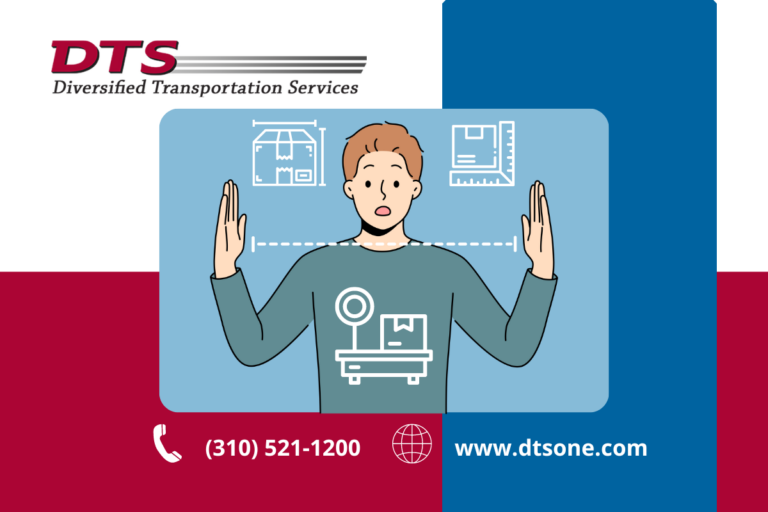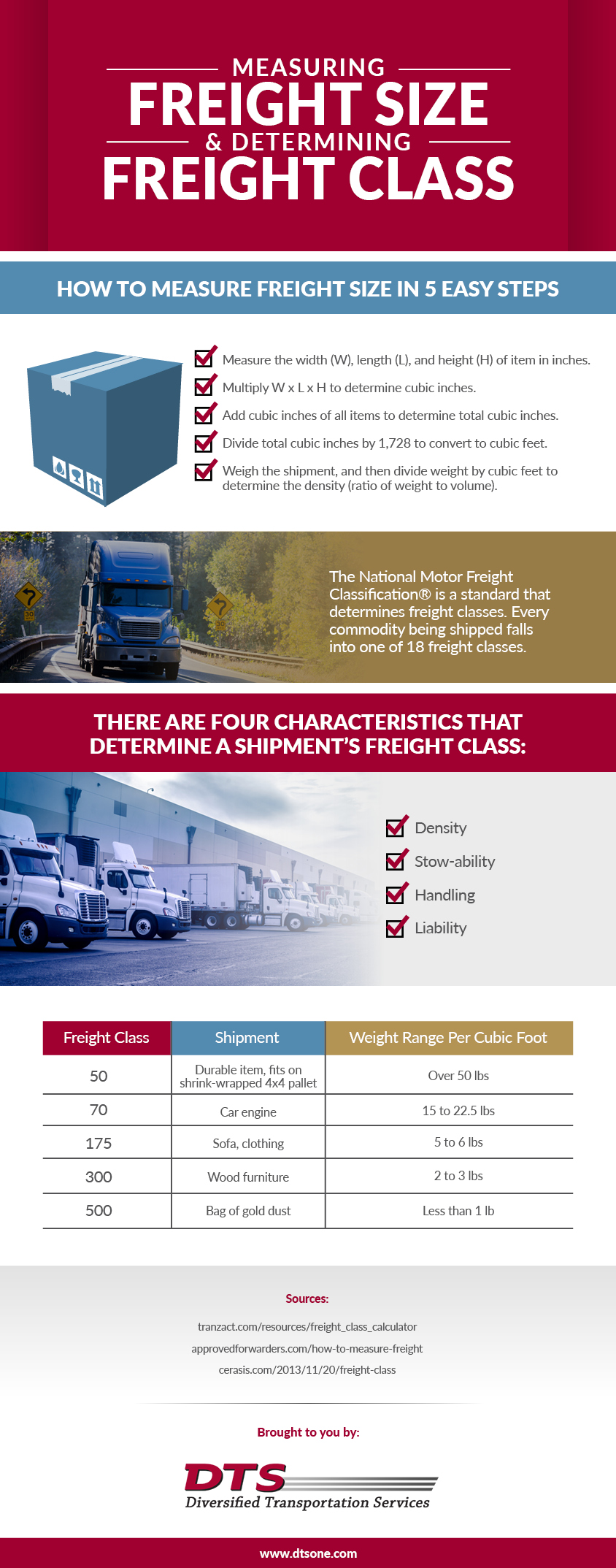
For less than truckload rates, you have to choose the right freight service, and then you have to measure your freight. Getting your freight from point A to point B isn’t as simple as putting it on a truck and waiting. It requires careful consideration of factors like LTL freight company selection and precise measurement to help ensure successful transportation from point A to point B.
While the best-expedited shipping services can simplify this process, savvy shippers also know how to accurately measure freight and determine freight class. In this infographic post, we have visual instructions for measuring your freight prior to the LTL shipping quote.

Measuring your freight is relatively simple.
Once your freight is properly measured, your freight class can be determined. The National Motor Freight Classification is the standard that determines freight classes for all. Every commodity that’s shipped falls into one of the 18 freight classes.
The measurement of your freight, as well as the characteristics listed above, will determine what freight class your less than truckload shipment will fall in. For example, to be categorized in freight class 50, your shipment should contain durable items and fit on a shrink-wrapped 4X4 pallet. It also will be over 50 pounds per cubic foot. To be in class 70, your shipment will most likely be a car engine and weigh between 15 and 22.5 pounds per cubic foot. For class 175, your freight will probably be a sofa or clothing item and will weigh five to six pounds per cubic foot. Class 300 deals with things like wood furniture and freight that is only two to three pounds per cubic foot. Finally, class 500 would be something like a bag of gold dust weighing less than one pound per cubic foot.
Being able to accurately measure your freight can make a huge difference when it comes to freight class, and ultimately, cost. Make sure you follow these steps so you can be put in the right class by your expedited shipping service.
Whether you're a company looking to improve one facet of your supply chain, your entire supply chain, or simply looking for a transportation and logistics consultation, we can help.